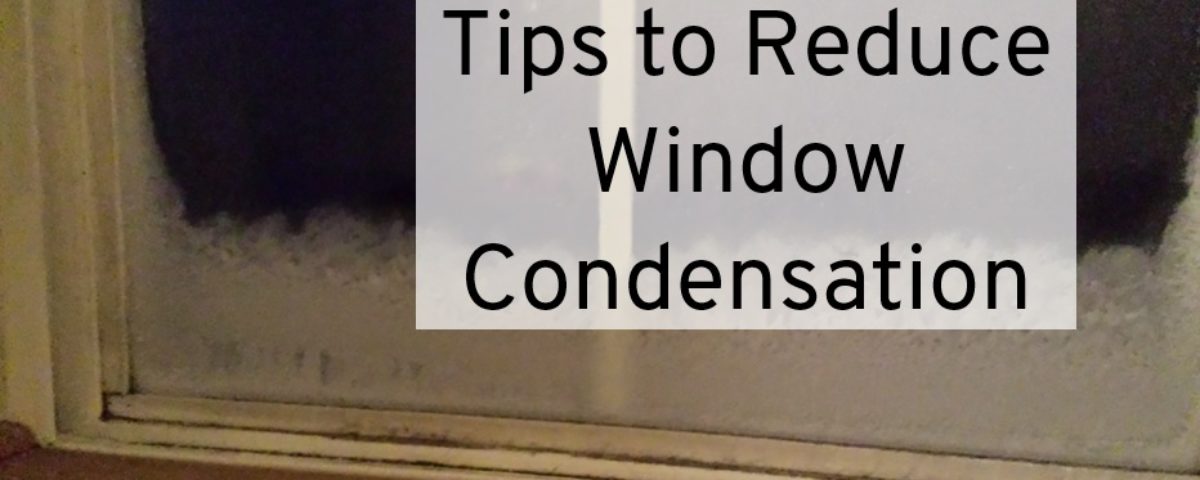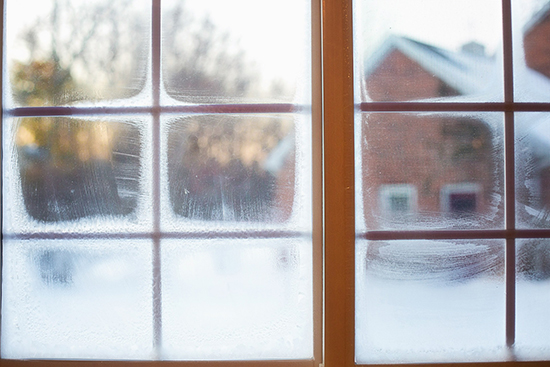
Window Condensation Tips
In our last blog post we discussed what window condensation is and why it happens. We continue the story here to give you some tips and tricks to reduce window condensation in your home.
The first step is getting your home to an indoor temperature and relative humidity level that is both comfortable and reduces window condensation. While comfort relies on personal preference, a 68-72-degree temperature with 28-31% relative humidity produces a dew point in the mid-30s and seems to strike a balance between comfort and reduced condensation for most. Calculate your own dew point with the dew point calculator! If your thermostat doesn’t track indoor relative humidity, you can buy a low-cost hygrometer online or in most hardware stores and place it in a few different rooms to get an idea for your current levels.

Now that we’ve narrowed in on our target for home conditions, we can review tips and tricks to get to those levels. Temperature is easy, simply adjust your thermostat to this range. Humidity can be a bit more difficult to control. Older homes and new homes that aren’t well built will dry out naturally in the winter. This happens because dry winter air is leaking into the home through various air leaks in the shell of the home. It’s also why in many of these homes, you’ll notice they have whole-home humidifiers (sometimes known as Aprilaires) installed! One of our guarantees is that a Wesenberg Home is well-built and airtight and, therefore, doesn’t dry out naturally in the winter.
Part of being very airtight is retaining indoor moisture from things like showering and cooking. It’s very possible the home could be in the mid to upper 30s for relative humidity from typical living in our homes. We know our target is 28-31%, so we must get some of this humidity out otherwise it will cause additional window condensation. Something to note is that during a home’s first heating season, materials within the home, from plaster to paint to stains, will have higher moisture levels and add to the humidity levels near windows.
These 3 Tips Can Make a Big Difference
Having a well-built and airtight home means we can more easily control the indoor conditions. The first tip to lower the humidity level and reduce window condensation is to aggressively use bath fans and range exhaust fans. We recommend homeowners have push button timers in the bathroom and start the bath fan before turning on a shower and letting it run another 60 minutes after the shower is turned off. This ensures the introduced moisture gets up and out of the home before it can dissipate throughout and raise vapor levels near our window surfaces.
The second tip is to not isolate your window surface during the day or night! As a reminder from our last post explaining the science of window condensation, your home is heating the glass surface all day from the heated air. If you have casement windows, removing the screens during heating season allows more heated air to warm the surface. As night time approaches, if you fully close shades or blinds, you’re pushing that window which was warm to the cold outside. It’s a lot like taking a cold beverage out of the refrigerator on a hot summer day. You shock that surface and condensation occurs. To reduce window condensation, it’s helpful if you leave blinds open several inches at the bottom (the top too if you have dual-function blinds). This gives most homeowners the privacy they want, while allow some heated air to keep the glass surface warm.
Thirdly, forcing the home’s warm air to the window surface will reduce window condensation. It’s no coincidence that homes often have heat vents directly under windows: to keep them warm! Once you have our indoor humidity to the 28-31% range, placing the ceiling fans on a low speed helps move air throughout the room. Ceiling fans usually have a switch on them that changes which direction they spin. You want air to be pushed down during the heating season, so test your ceiling fan and decide if the paddles are pushing are down or not and adjust accordingly.
Simple tricks and tips can go a long way in helping keep your home just as you like it. Window condensation isn’t wholly avoidable, but with a well-built home that allows you to control the indoor environment, you can use these tips to reduce the amount of window condensation. Our energy consultants, eFree Advisors, are a valuable resource if you wish to learn more about window condensation in your existing home.
